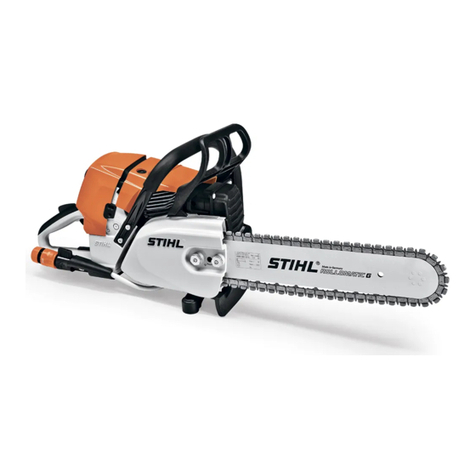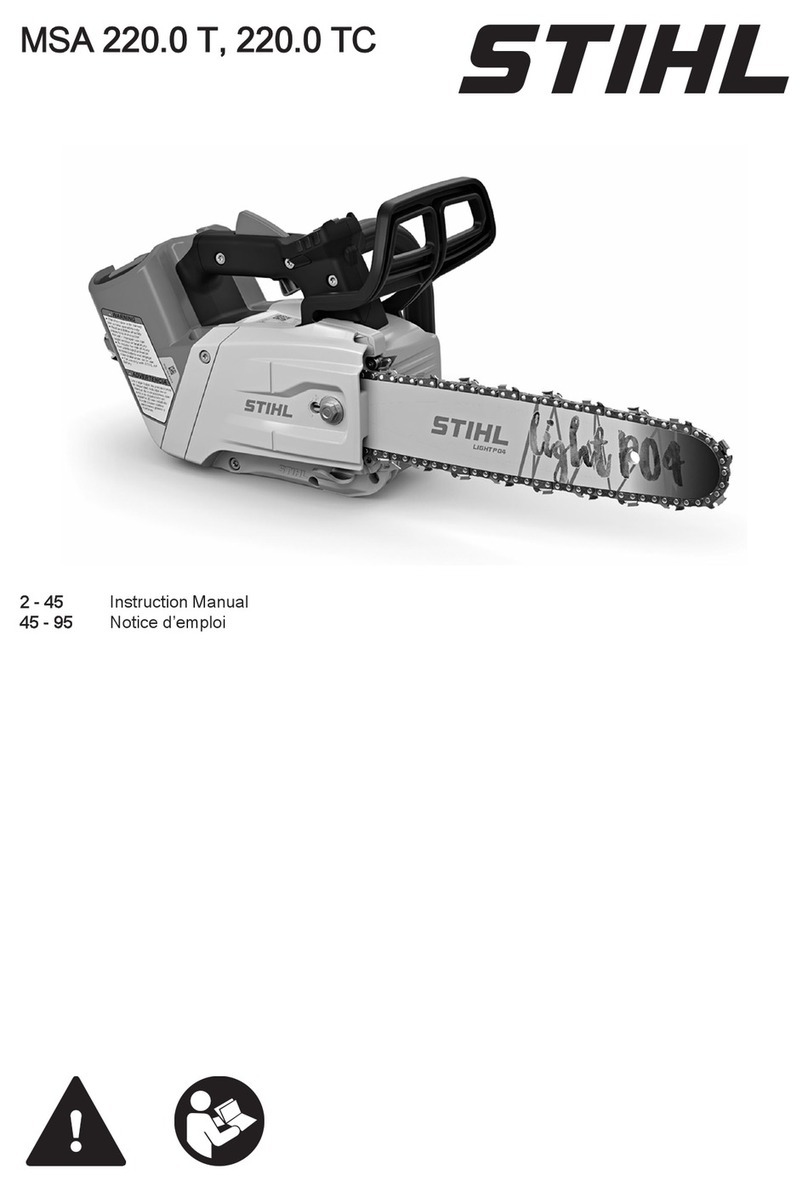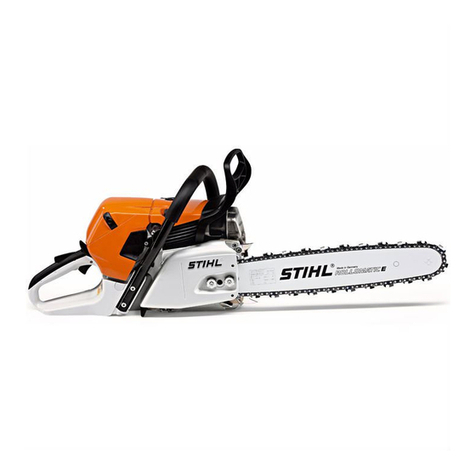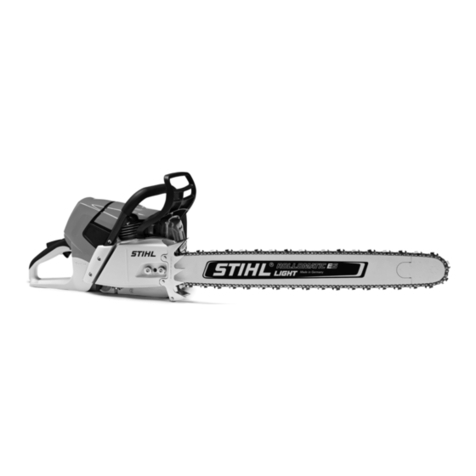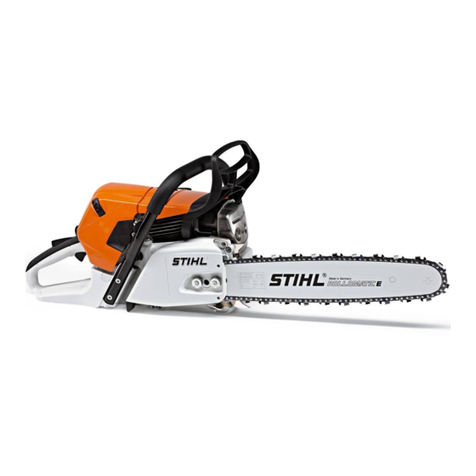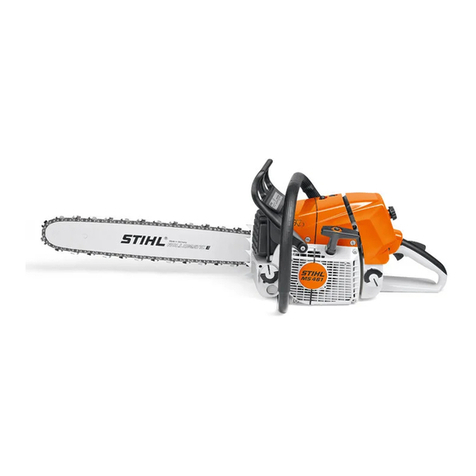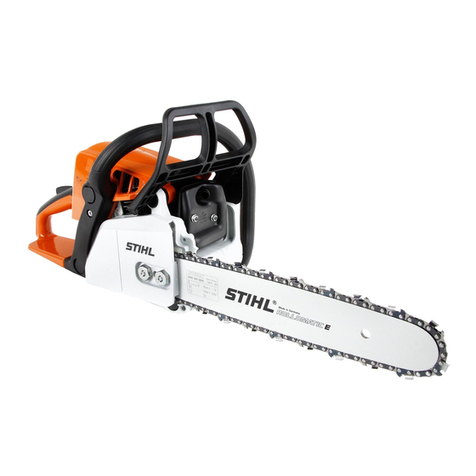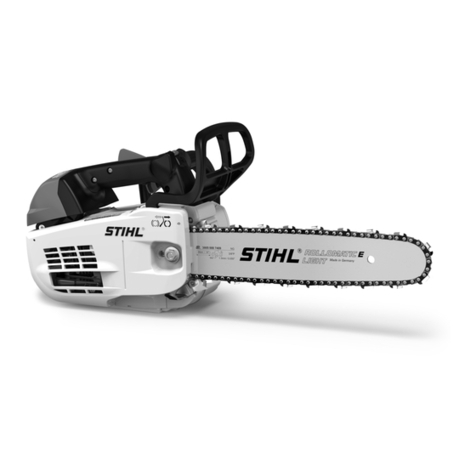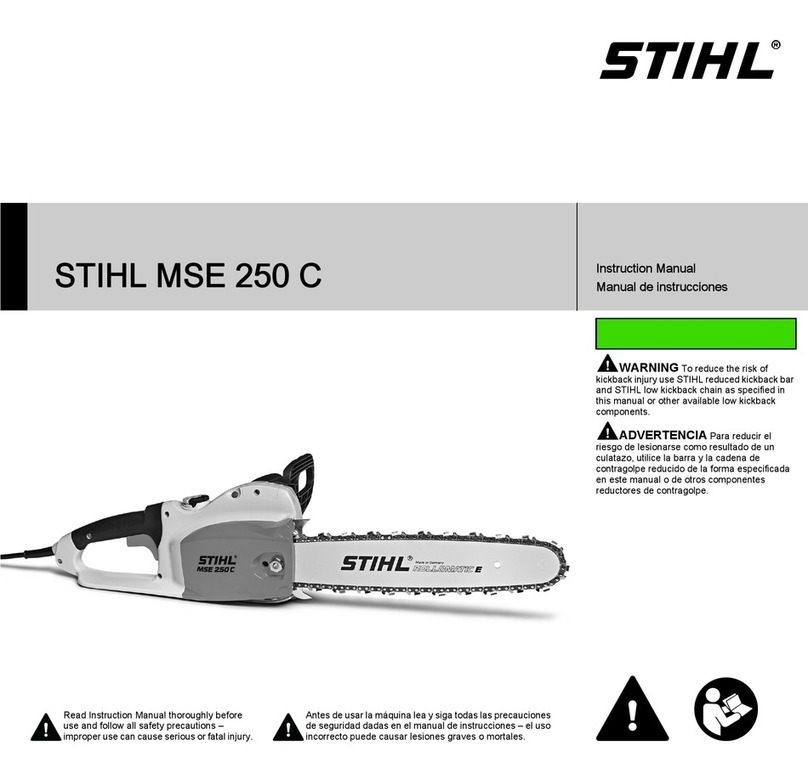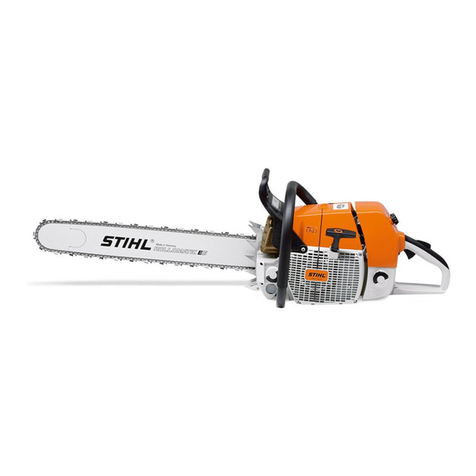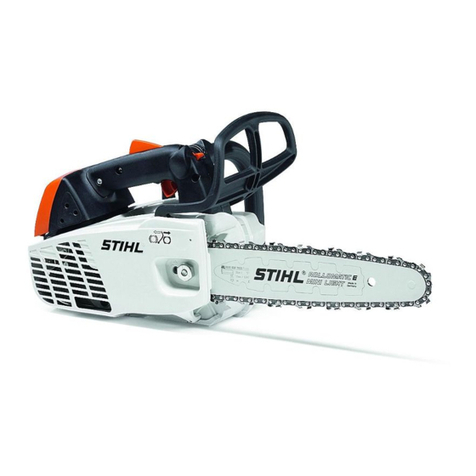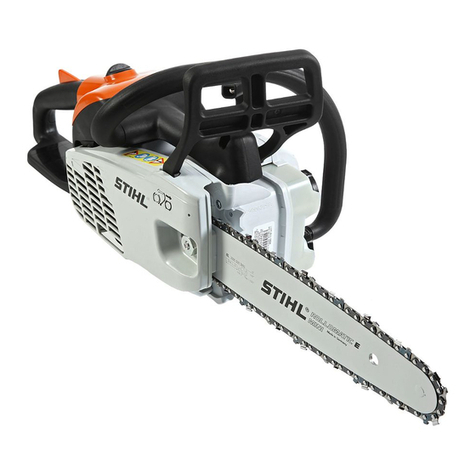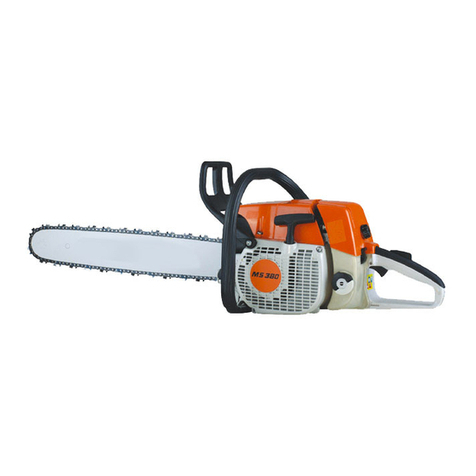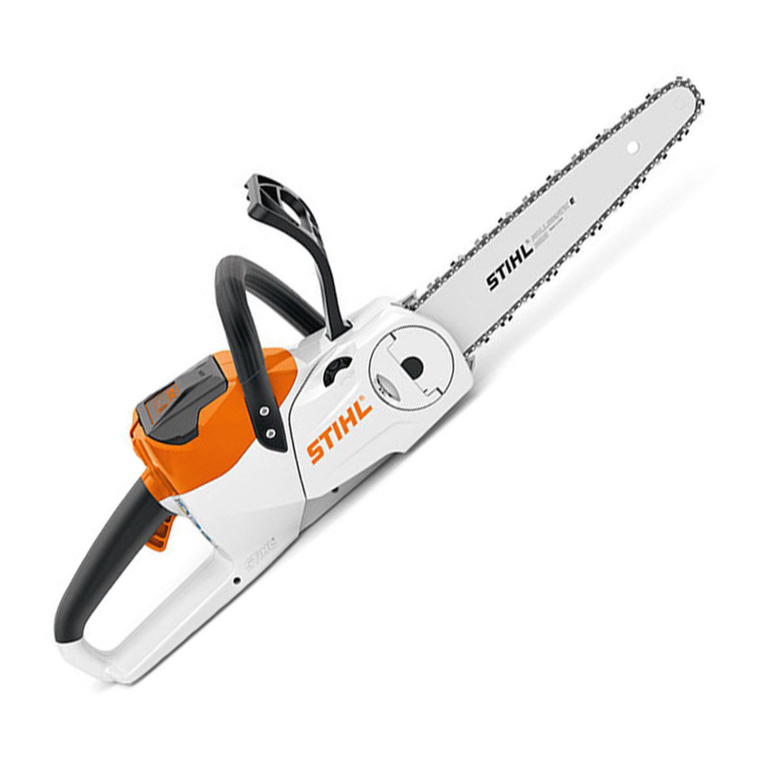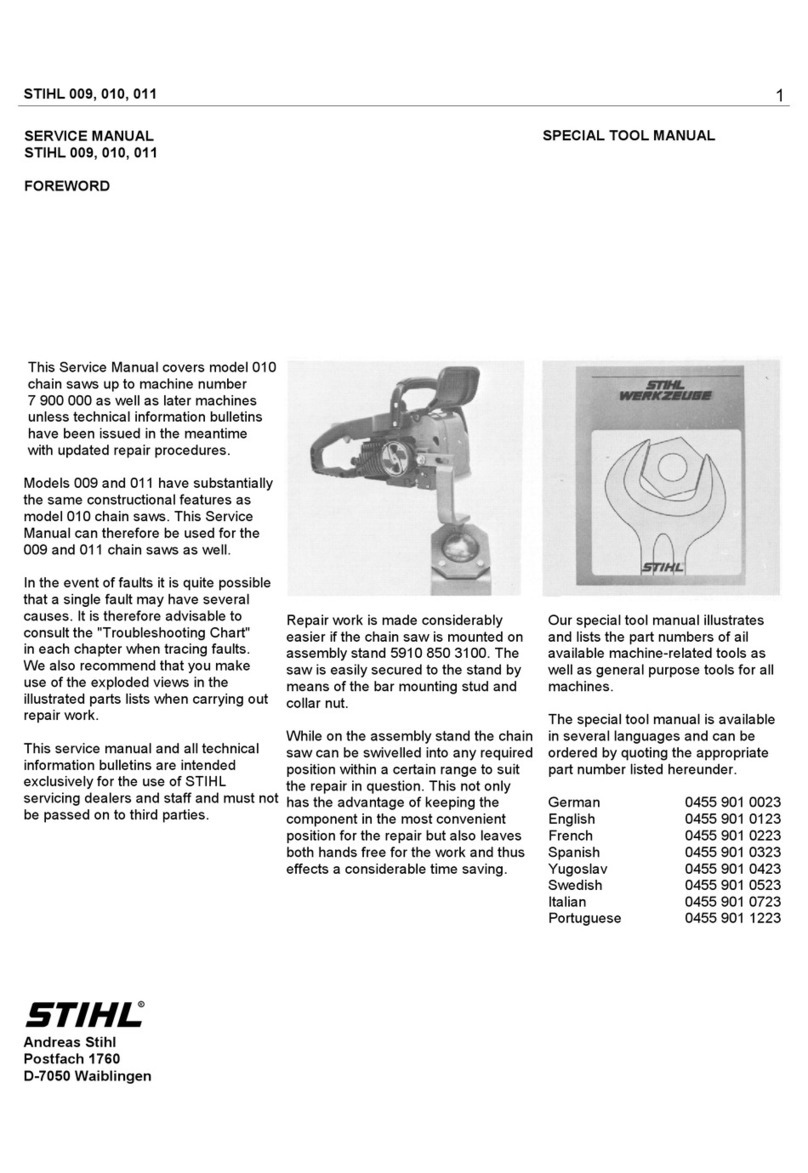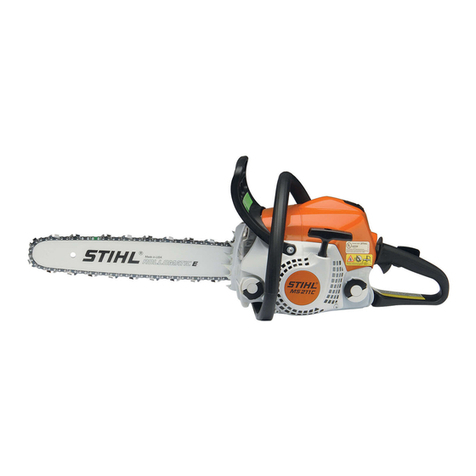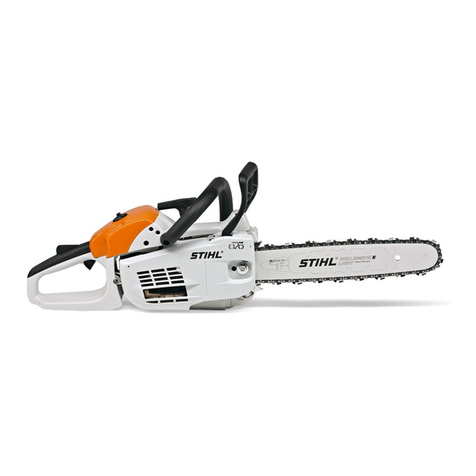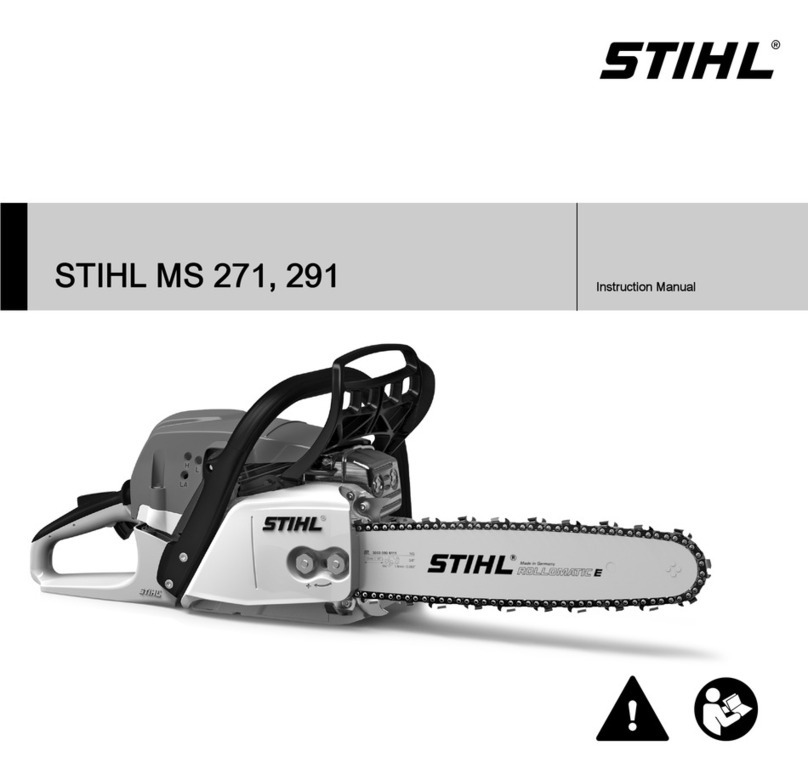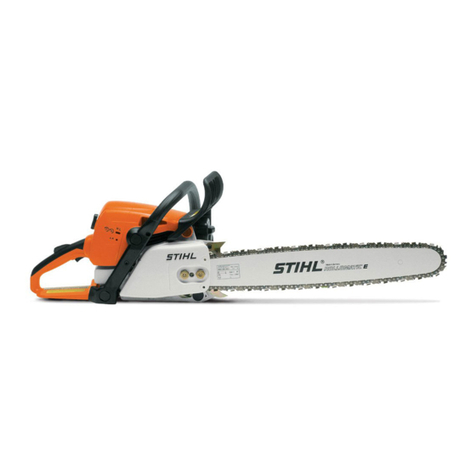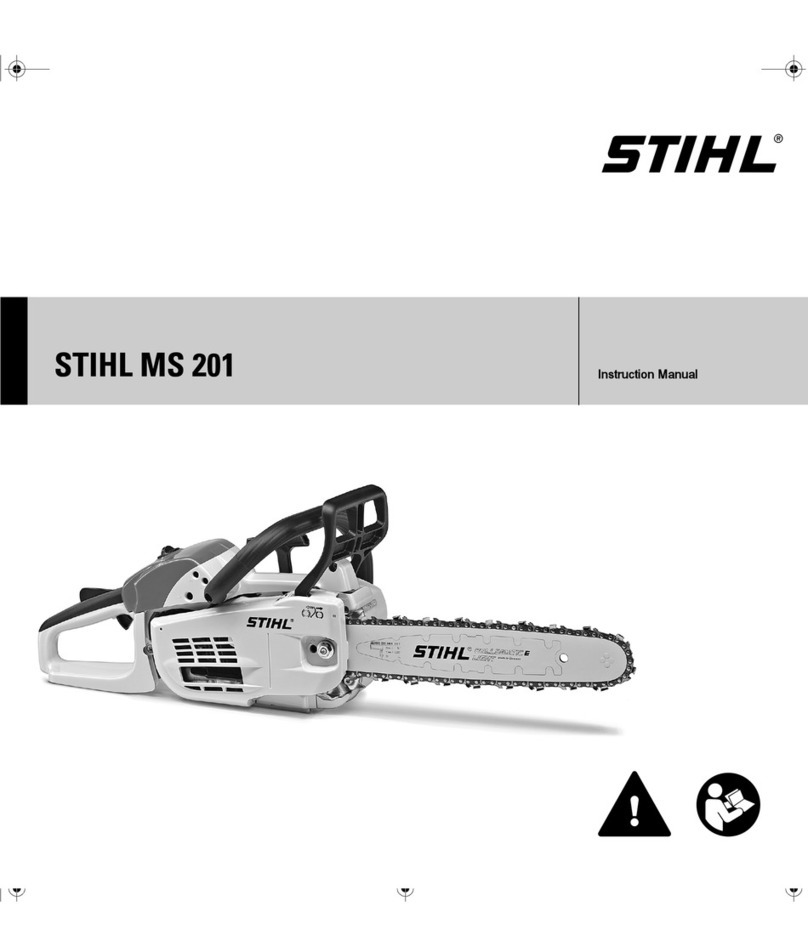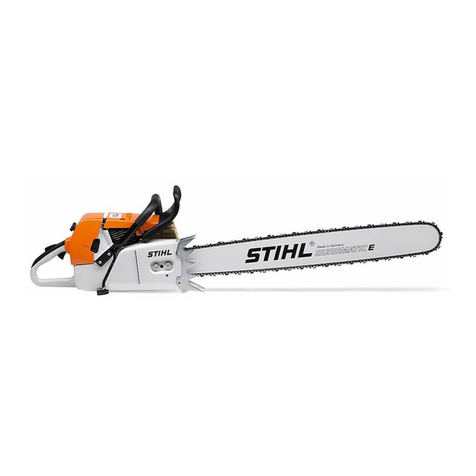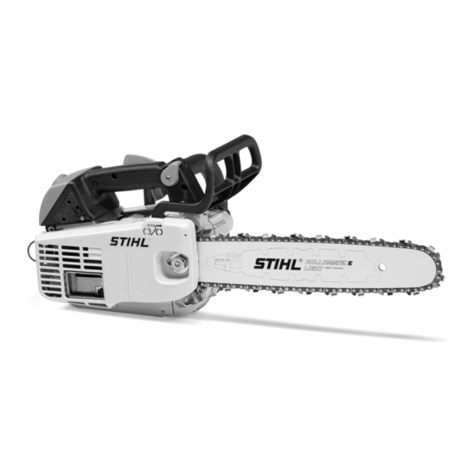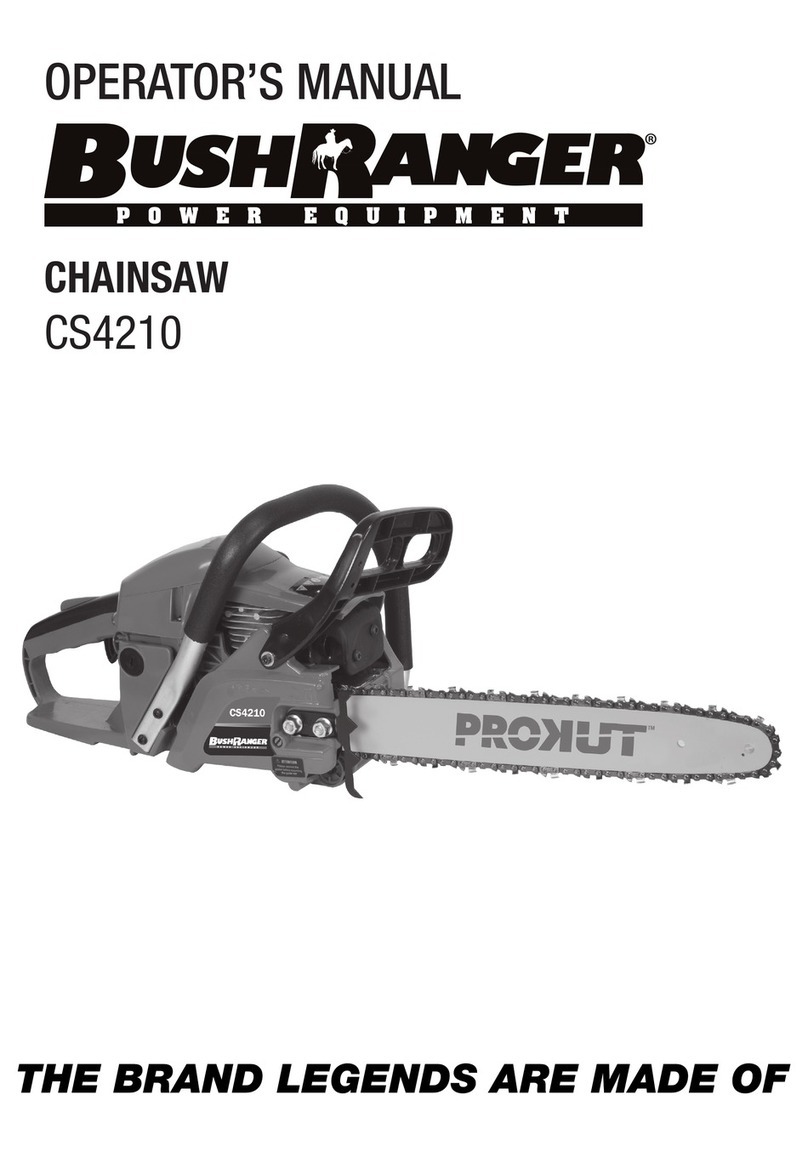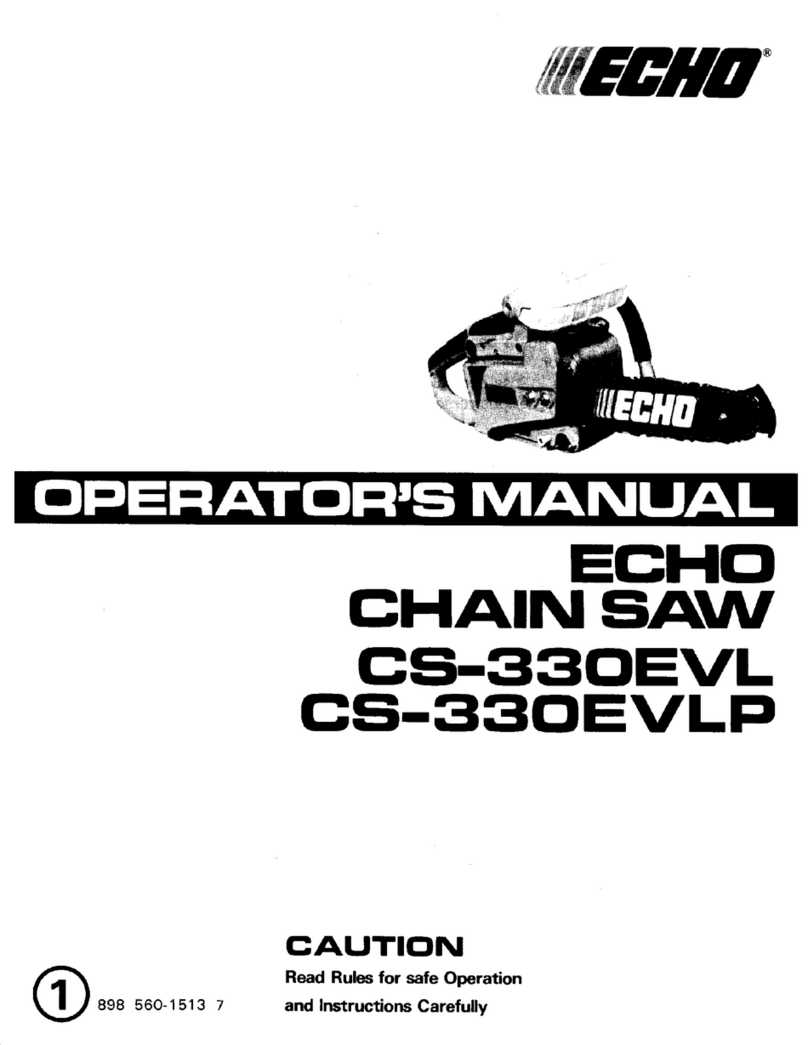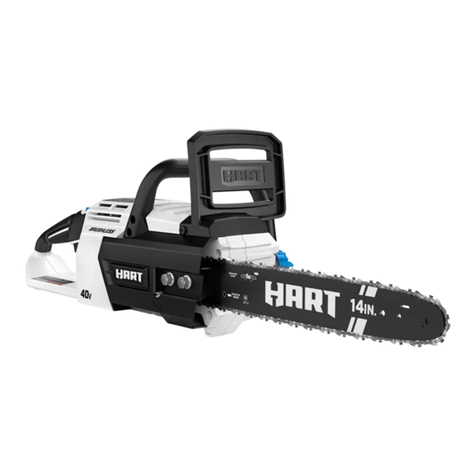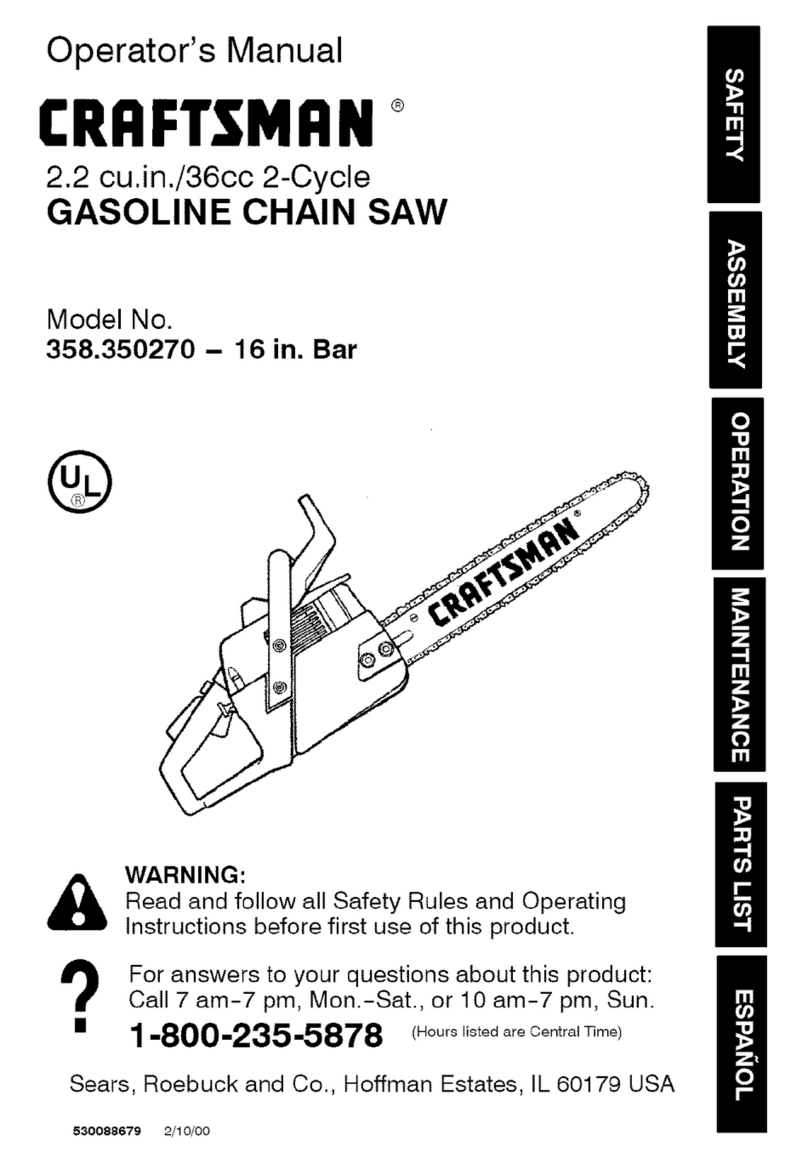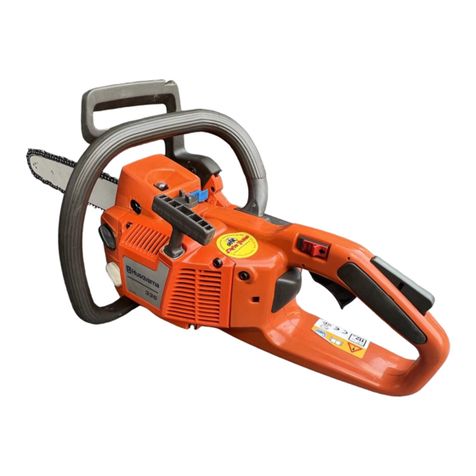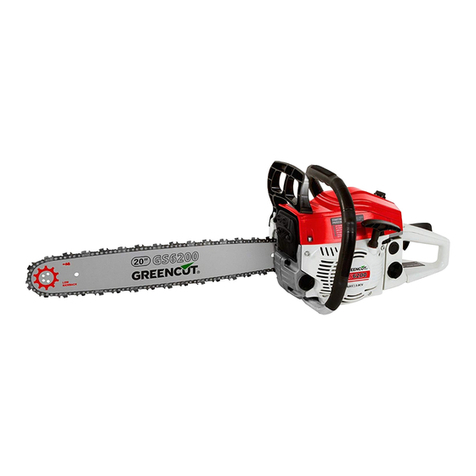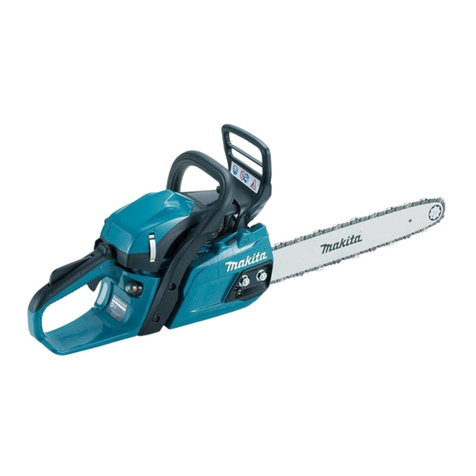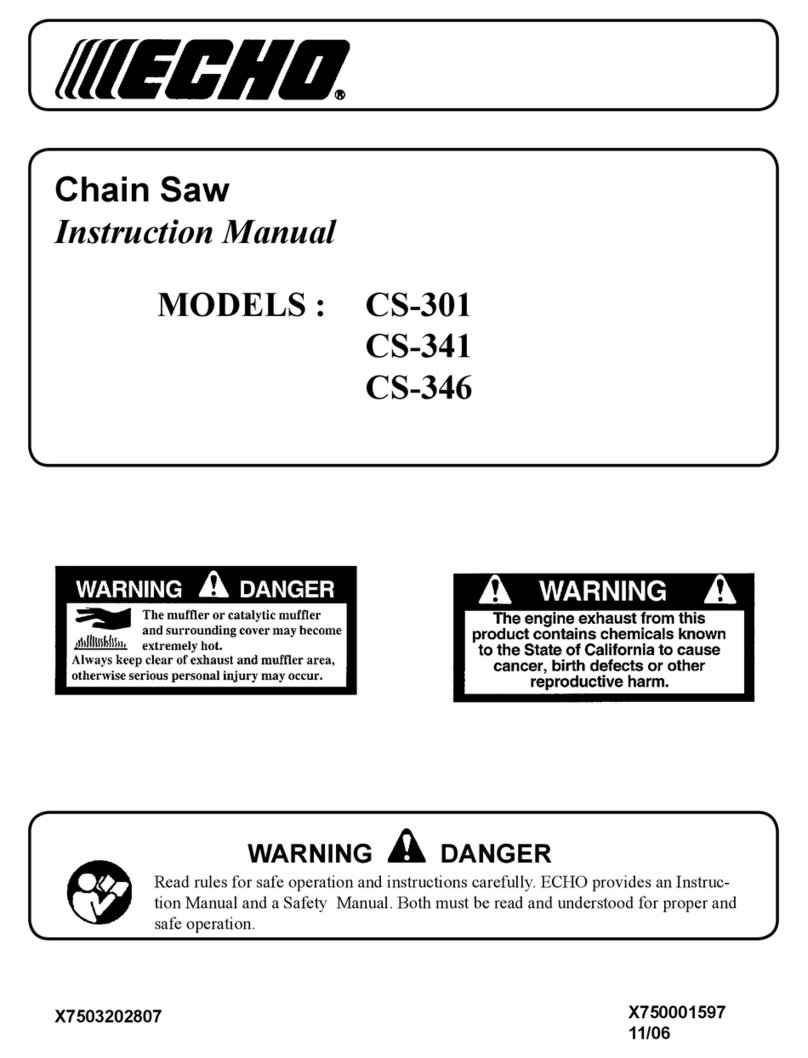MS 261 C-M
English
3
When not using the machine, it must be
laid down in such a way that it does not
endanger anyone. Ensure that the
machine cannot be used without
authorization.
The user is responsible for accidents or
risks involving third parties or their
property.
The machine should only be provided or
loaned to people familiar with this model
and its operation. The Instruction
Manual should always be handed over
with the machine.
Use of machines that emit noise may be
restricted in terms of time by national
and/or on-site, local regulations.
The machine may only be operated by
people who are fit, in good physical
health and in good mental condition. If
you have any condition that might be
aggravated by strenuous work, check
with your doctor before operating a
machine.
If you have a pacemaker: The ignition
system of your machine produces an
electromagnetic field of very low
intensity. An effect on individual
pacemaker types cannot be excluded
entirely. STIHL recommends that you
consult your doctor and the
manufacturer of your pacemaker in
order to avoid health hazards.
Anyone who has consumed alcohol,
medicines affecting their ability to react
or drugs must not operate the machine.
Postpone the work if the weather is bad
(rain, snow, ice, wind) – higher risk of
accidents!
Do not cut any material other than wood
or wooden objects.
The machine must not be used for any
other purposes – risk of accidents!
Only use tools, guide bars, chains, chain
sprockets or accessories that have been
approved by STIHL for this machine or
which are technically equivalent.
Contact a servicing dealer if in doubt.
Only use high-quality tools or
accessories. Otherwise there may be a
risk of accidents or damage to the
machine.
STIHL recommends the use of genuine
STIHL tools, guide bars, chains, chain
sprockets and accessories. These have
been optimized for the product and the
user's requirements.
Never modify the machine in any way,
as this could be extremely dangerous.
STIHL excludes all liability for personal
injury and damage to property caused
while using unauthorized attachments.
Do not use high-pressure cleaners to
clean the machine. The hard water jet
can damage parts of the machine.
Clothing and equipment
Wear proper protective clothing and
equipment.
Clothing which could become trapped in
wood, brush or moving parts of the
machine should not be worn. Do not
wear a scarf, tie or jewelry when
operating the machine. Long hair must
be tied up and covered (headscarf, cap,
helmet, etc.).
Wear safety glasses or a face shield and
"personal" hearing protection – e. g., ear
defenders.
STIHL can supply a comprehensive
range of protective clothing and
equipment.
Transporting the chain saw
Always engage the chain brake and
attach the chain scabbard – even before
transporting the saw for short distances.
When transporting the saw for longer
distances (more than approx. 50 m),
also stop the engine.
Always carry the saw by the handlebar –
with the hot muffler away from your
body, the guide bar must point to the
rear. Avoid touching hot parts of the
machine, especially the surface of the
muffler – risk of burns!
Clothing must be sturdy
and snug-fitting, but allow
complete freedom of
movement. Wear snug
fitting clothing with cut-
retardant pads – an over-
all, not a loose-fitting
jacket.
Wear safety boots – with
cut-retardant material,
non-slip soles and steel
toe caps
Wear a hard hat – if
objects could fall on you.
Wear sturdy gloves.
